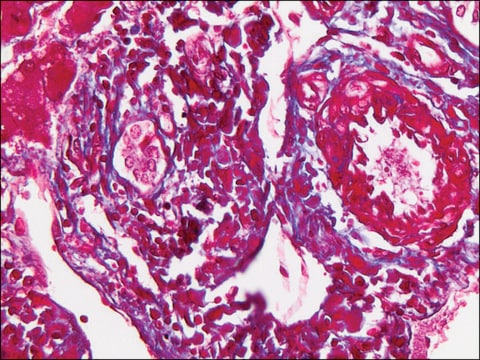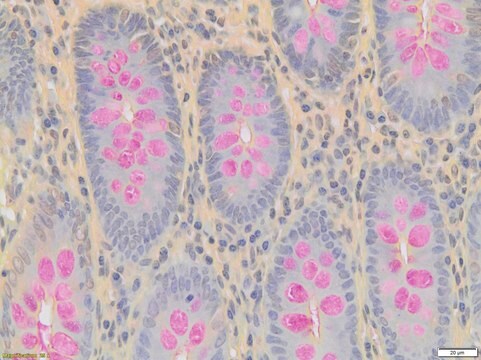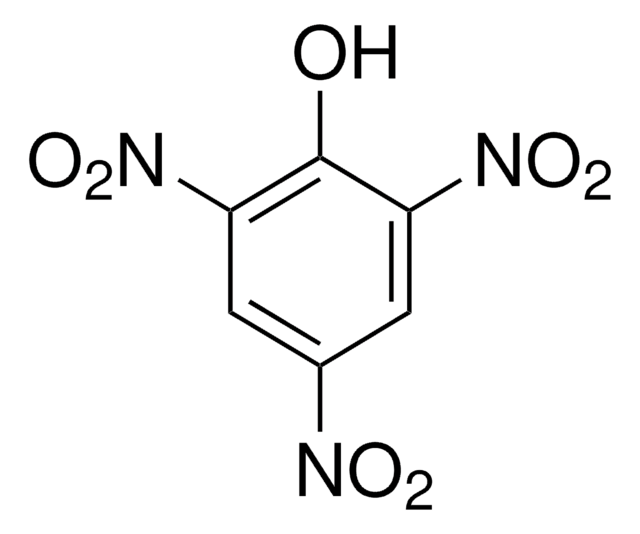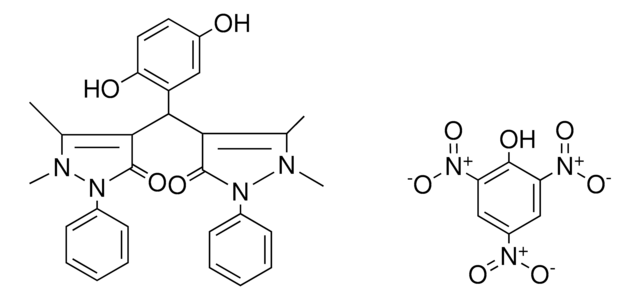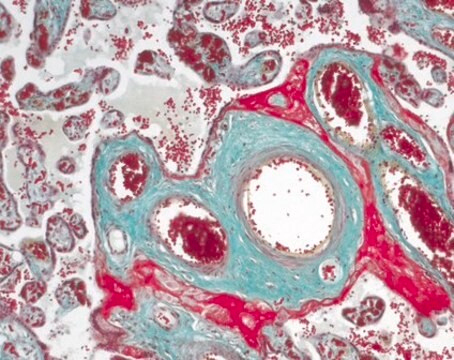HT10132
Bouin′s solution
histological fixative
Synonym(s):
Bouin’s fluid
About This Item
Recommended Products
Quality Level
shelf life
Expiry date on the label
composition
acetic acid, 5%
formaldehyde, 9%
picric acid, 0.9%
color
yellow
application(s)
hematology
histology
storage temp.
room temp
Looking for similar products? Visit Product Comparison Guide
General description
Application
Additionally, it has been used for the following purposes-
- staining of human liver biopsy tissue samples for two-photon excited fluorescence (TPEF) and second-harmonic generation (SHG) imaging
- fixation of rat ovaries for the observing follicle cells using microscopy
- fixation of gonads of crab for morphological and histological analysis
Biochem/physiol Actions
Flash Point(F)
Not applicable
Flash Point(C)
Not applicable
Personal Protective Equipment
Regulatory Listings
Regulatory Listings are mainly provided for chemical products. Only limited information can be provided here for non-chemical products. No entry means none of the components are listed. It is the user’s obligation to ensure the safe and legal use of the product.
Choose from one of the most recent versions:
Already Own This Product?
Find documentation for the products that you have recently purchased in the Document Library.
Customers Also Viewed
Our team of scientists has experience in all areas of research including Life Science, Material Science, Chemical Synthesis, Chromatography, Analytical and many others.
Contact Technical Service